There have been numerous articles written about Kendall Hayes and his worldwide smash composition “Walk On By” but shamefully few references to his own recording career. Writing about Kendall Hayes without mentioning arguably the biggest country song of all-time is an impossible feat. I get that. Baseball without the Babe? Boxing without Ali? Nah, doesn’t work there and doesn’t work here. “Walk On By” casts a big shadow, but I hope to shine some light on Kendall Hayes’ life and musical career in the central Kentucky area as well. Enjoy. [2020 Shawn Chambers / Lexingtunes]
Kendall L Hayes* was born Oct 6 1935 on the family farm near Perryville and enjoyed a typical small-town Kentucky upbringing. Country boys interested in music find their teachings where they can. WSM and the Grand Ole Opry may whet the appetite, but actually learning music requires real dedication. Young Kendall struggled to teach himself to read sheet music, while his mother guided him on piano from an early age. The 14-year-old Kendall was industrious and cornered Bee Carpenter (a dairy delivery man) who agreed to teach him some basic chords on his new guitar.
Hayes progressed quickly and in his late teens joined Ernest Cannon (mandolin) and DeWitt VanArsdale on guitar / vocals as the Hillbilly Trio and captured first place in a 1953 Danville talent contest. The prize? A $5 gift certificate from the Gem Supply store.
With future riches a near certainty, the boys added Alfred Wilson on steel guitar and performed as the Melody Boys and the Blue Grass Playboys. Regional shows for the Kiwanis Club and Lions Club kept the band sharp and the outfit was solid enough to land a morning slot on WHIR Danville. Years later Hayes would lament not the early start of the 6 a.m. show but the puckering practice of sucking lemons in the morning to “get their voices right that early in the day.”
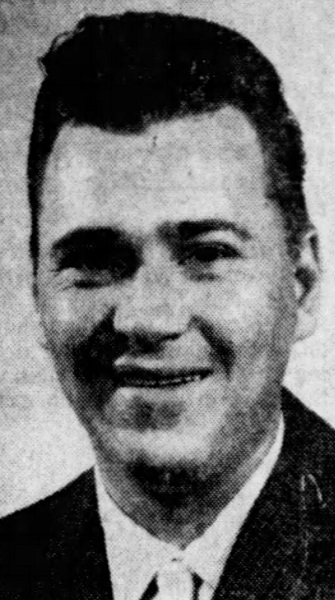
Following graduation from Perryville High School, Hayes took the road traveled by so many other Kentucky boys and entered the military. His stint started in ’54 and Hayes was shipped west to McClelland Air Force Base near Sacramento, California.
Hayes enjoyed performing for his fellow enlisted men and was actually taken to Capitol Records by his Master Sergeant for an audition. No contract was offered, but Capitol encouraged him to spend more time writing his own material to increase his marketability. This may have been the single best piece of advice Hayes would ever receive.
Any disappointment Hayes felt from Capitol was forgotten in the California sunshine of 1957. His Kentucky sweetheart, Doris VanArsdale, was now his bride and the two started thinking about the roadmap to their future lives together.
Finishing his stint in 1958, the couple returned to Kentucky and Hayes enrolled in a Junior Accounting course at Lexington’s Fugazzi School of Business. Upon graduating, the couple took a chance with a move to Nashville for employment and to be closer to the music industry.
Hayes worked for Meadow Gold Ice Cream as night supervisor and as a mail clerk for the Spur Oil Company, but still found time to write and perform. Doris found employment as a cost clerk at the B&W cafeteria. In off hours, Hayes pounded the pavement, pushing songs and playing the occasional gig.
At least one source has him playing with the Sprouts of Mercury Records fame at this time.
Nothing broke for the couple and when their first child (son James Nicholas) arrived in December of 1960 they decided a move back to Kentucky was imminent. The Hayes family left town with the new baby, their few possessions, and a bit of melody and snippet of lyrics floating around in Kendall’s head.
Back home in Danville, Hayes found work as a bookkeeper for Hignight Electric and continued to work on his fragmented composition. He knew where he wanted to go with his song but could not quite make it work. The prior year in Nashville fellow musician, Doug Franklin, had suggested to him that whoever used the phrase “strangers when we meet” in a song would surely have a hit. This was, of course, the title of the recent infidelity-themed movie starring Kirk Douglas. With this phrase echoing in the chorus, Kendall teased a melody from the family piano and crafted his verse. The crude demo was rushed to Lowery Publishing where it fell in the lap of lead writer, Gary Walker. Walker felt it needed a hook and it was his addition of the sly “wait on the corner” and help composing another verse that finally realized the song’s full potential. In short order the song was shopped to Shelby Singleton at Mercury Records and recorded and released by Leroy Van Dyke.
For all the thrill of having his first song recorded, Kendall Hayes was initially skeptical. He had wanted a bigger name like Marty Robbins. The situation was aggravated by Mercury Records insistence on pushing the 45’s other cut: “My World Is Caving In”. Lowery and crew rose to the occasion and found airtime for “Walk On By”. It did not take long for things to steamroll. The song reached #1 on the County Chart in late 1961 and carried over into 1962. It spent an incredible 19 weeks at the top slot and 37 weeks total on the Billboard Country Chart. Millions of copies were sold. The song crossed over and charted at #5 on the Pop Chart. It charted overseas. The few hundred dollars showing on the first royalty checks quickly became thousands. The $40-a-week bookkeeper had found his calling.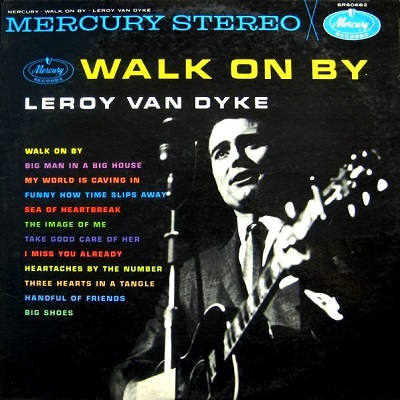
The iron would never be hotter and Kendall hoped to parlay his writing success into a music career. Hayes had a great demo tape recorded in Nashville thanks to an $800 investment from his friend and fellow bookkeeper, James Stigall. Even though composer Kendall Hayes was hot in Nashville he struggled for months trying to land a singing contract. Stigall learned of the rejections and decided to offer some homegrown help.
Securing the rights to the demo, Stigall recruited Larry Wooden (basketball coach and teacher at Perryville High School) and Gerald Sinclair (basketball coach and teacher at Forkland High School). The trio intended to handle all aspect of the business although none had prior experience in the industry. With a name inspired by the geography along the Kentucky River, Palisade Records was officially launched in June 1962 and would be exclusively focused on Kendall Hayes releases.
As “Walk On By” so ably demonstrated, Hayes’ compositions had clear crossover appeal and the Palisade 45s are great examples of his aural attempts to create a new crop from country/pop pollination. The releases were already genre arbitrary to Billboard. All received Moderate Sales Potential with the first lumped into the Pop Reviews, while the second two were reviewed as Country.
Sonically, the six cuts have a better sound than nearly all local records and for good reason – all were recorded in Nashville at the famed Owen Bradley Studios with hired professional session players to include: Ray Stevens, Kelso Herston, Jerry Kennedy, Gordon Stoker, Bob Moore, Little Willie Ackerman, Jerry Reed, with the voices of Margie Singleton and the Jordanaires.
The first waxing features a haunting guitar trip to the “Jungle of Love” – a stark tale of romance set under the cold lights of the big city. The catchy teener flip “Thisaway or Thataway” is a classic love conundrum with wild organ and girly backing vocals. It would be easy to envision Ricky Nelson or another teen idol belting this to a soda fountain crowd. At least a thousand copies of this inaugural release were sent to disc jockeys throughout the country.
Cooling down a bit, the sophomore effort A-side heads back to the country with “Johnny Lonesome”, which boasts a common broken-hearted-boy theme. The heartache continues on the flipside, but the blistering guitar of “The Tears Came Falling Down” belies the message.
The final Palisade release has Hayes vocally “Roaming Through the Countryside”. This summery romance number is another that could go country or pop with equal ease. The cutesy “Come On Son” finds the singer involved in a number of situations, which can only be resolved with a song title call back apparently.
With the six song catalog firmly in hand, Larry Wooden took lead on expanding to both foreign and domestic markets. In 1963, he leased all six masters to Emerald Records of Northern Ireland whose head Mervyn Solomon negotiated the release of two EPs on Great Britain Decca. One Hayes track (“The Tears Came Falling Down”) appeared on Country Jubilee Vol 2. Later in the year, “Johnny Lonesome” and “Roaming Through the Countryside” were pushed domestically to Mt Vernon, New York, and pressed on the Pelham label.
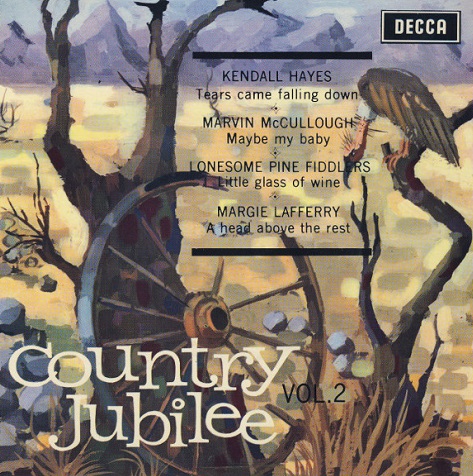
Ultimately, the Palisade singles failed to create the buzz the owners (and Hayes) had hoped for. The label folded quietly after the three releases, but Hayes still had music to deliver.
He spent the mid-1960s releasing records on Chart (with Kay Arnold) and Sims while touring on some Grand Ole Opry road shows as well as playing locally. He also continued to write and his stack of original compositions pushed nearly a thousand. Try as he might, however, he could not replicate the incredible success of his smash.
“Walk On By” would not die. It was a blessing and a curse. Every song Hayes wrote was compared to it, but it allowed him the financial freedom to continue writing nearly full-time. It seemed every year or two another artist would cover it and another check would arrive. The song was covered by some of the biggest names in country and pop music: Conway Twitty, Roy Drusky, Johnny Burnette, Kay Starr, Patti Page, Webb Pierce, Cowboy Copas, Connie Francis, Dean Martin, and so many more.
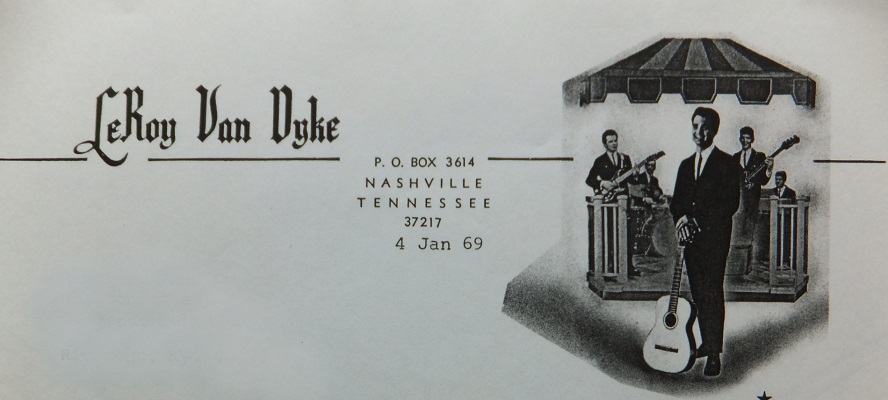
He did have other hits and other songs recorded that are largely forgotten now. Johnny Wright peaked at #37 in 1965 with “Don’t Give Up the Ship”. Both Eddy Arnold and Perry Como recorded “Roaming Through the Countryside”. Locally, several artists in the state covered his material such as Pete Engler for Owensboro’s Twin Spin label and longtime Harrodsburg musician (and friend) Bobby Martin,
Tired of the road shows and travel, Hayes settled down to sporadic live appearances by the late 1960s and through the early 1970s. He did agree to a long-term engagement in 1969 at Frankfort’s Capitol lounge, which allowed him to scratch his musical itch and also return to his wife and two sons each night. He finished there in 1972.
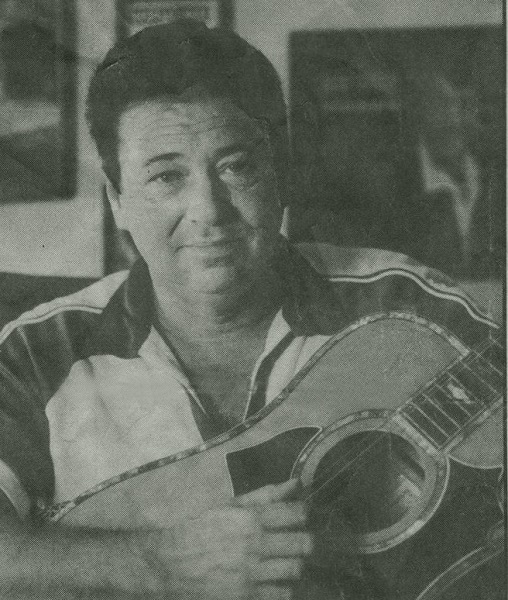 Hayes dropped one last single on Lemco in 1975. Curiously, Hayes chose to reverse his name on the label. In at least one contemporary article he states it was purposeful to make it easier for listeners to remember and say. The two cuts were, of course, both originals and he was backed by uncredited members of Exile and local guitarist Kenny Whalen. “It Gets Dark Early in Louisville” is the story of a soldier on the way to Fort Knox going AWOL for LOVE. The flip “Georgiana” heads south for a tale of love lost and remembered on rural backroads.
Hayes dropped one last single on Lemco in 1975. Curiously, Hayes chose to reverse his name on the label. In at least one contemporary article he states it was purposeful to make it easier for listeners to remember and say. The two cuts were, of course, both originals and he was backed by uncredited members of Exile and local guitarist Kenny Whalen. “It Gets Dark Early in Louisville” is the story of a soldier on the way to Fort Knox going AWOL for LOVE. The flip “Georgiana” heads south for a tale of love lost and remembered on rural backroads.
It is uncertain how many copies or how much publicity Hayes tried to generate for this final offering of his, but he still found time to showcase his singing into the late 1970s and early 1980s. There are extant promotional ads for live appearances he made with Harold Montgomery & the Kentucky River Express and Tommy Dunsmore & the Turndowners around the Danville region.
The accolades kept coming for “Walk On By”. In 1984 Kendall Hayes was honored as a member of the “Million Airs” Club for those whose songs have received the lofty seven-digit airplay total. The next generation had already ensured more airplay to come with recent covers by Robert Gordon in 1979 and another charted version by Donna Fargo in 1980.
In total, Hayes once stated his accumulated royalties topped $100,000 for “Walk On By”. Though Walker was never credited as co-writer on the label, Hayes never forgot his contribution and was said to have given a quarter of the royalties to him.
Kendall Hayes remained local and despite his fame – humble and accessible. His final recognition was the greatest. Gravely ill from terminal liver cancer, Hayes was feted in Nashville in December 1994 with a Billboard award declaring “Walk On By” the biggest country music record in history.
Kendall Hayes passed away February 10, 1995 at age 59.
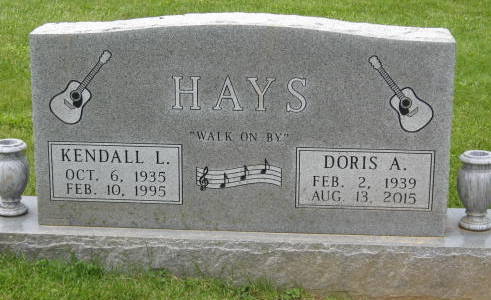
In 1998, a roadway was named in his honor in his native Boyle County.
It took more than 50 years, but in 2013 a song by the Florida Georgia Line dubbed “Cruise” finally broke Van Dyke’s record for most weeks at number one on the country chart.
*Kendall’s true surname is Hays. A misspelling as ‘Hayes’ from a record award at the time of “Walk On By” prompted Hays to adopt the new spelling as a sign of luck for his music career. In almost all aspects it is written Hayes, but his grave and road named in his honor show his original birth spelling of ‘Hays’.
Discography:
45s:
Palisade
14510 Jungle Of Love / Thisaway Or Thataway 1962
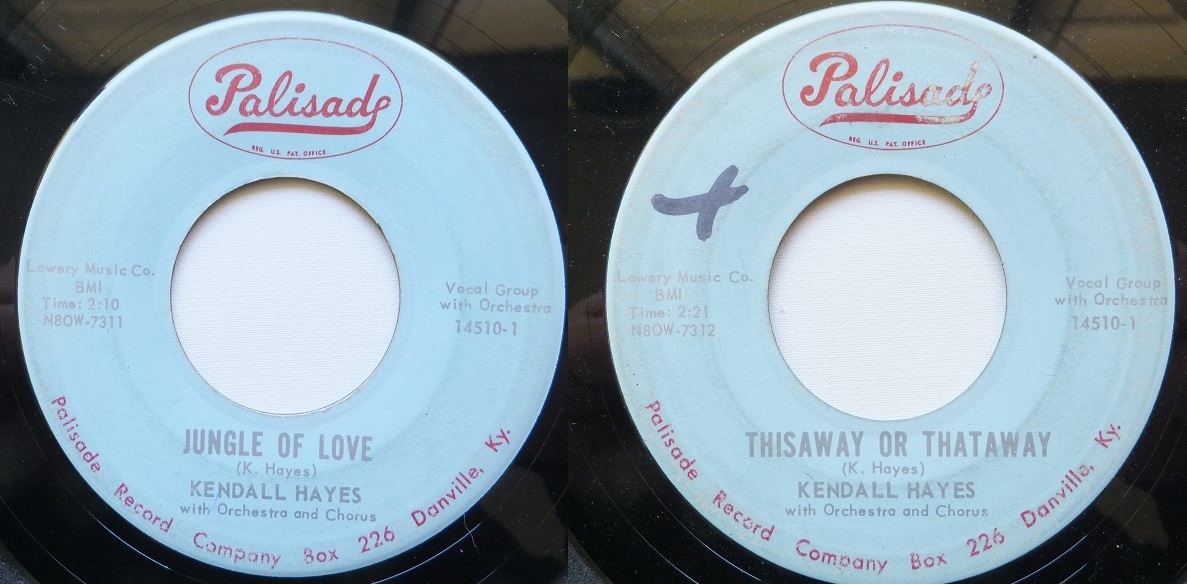
14610 Johnny Lonesome / The Tears Came Falling Down 1962
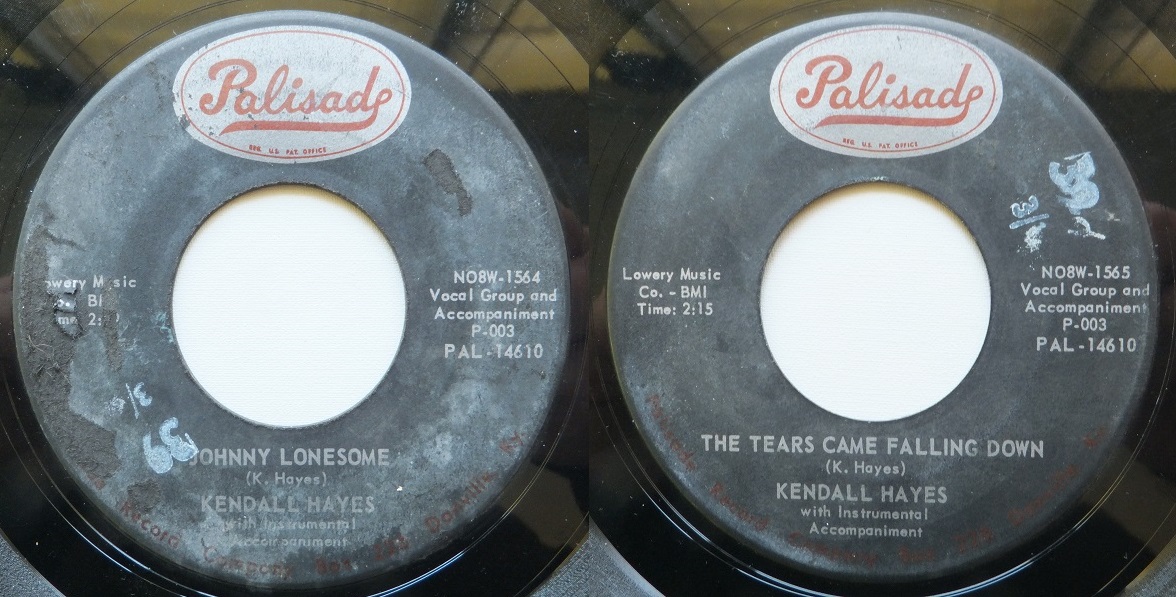
14710 Roaming Through The Countryside / Come On Son 1962
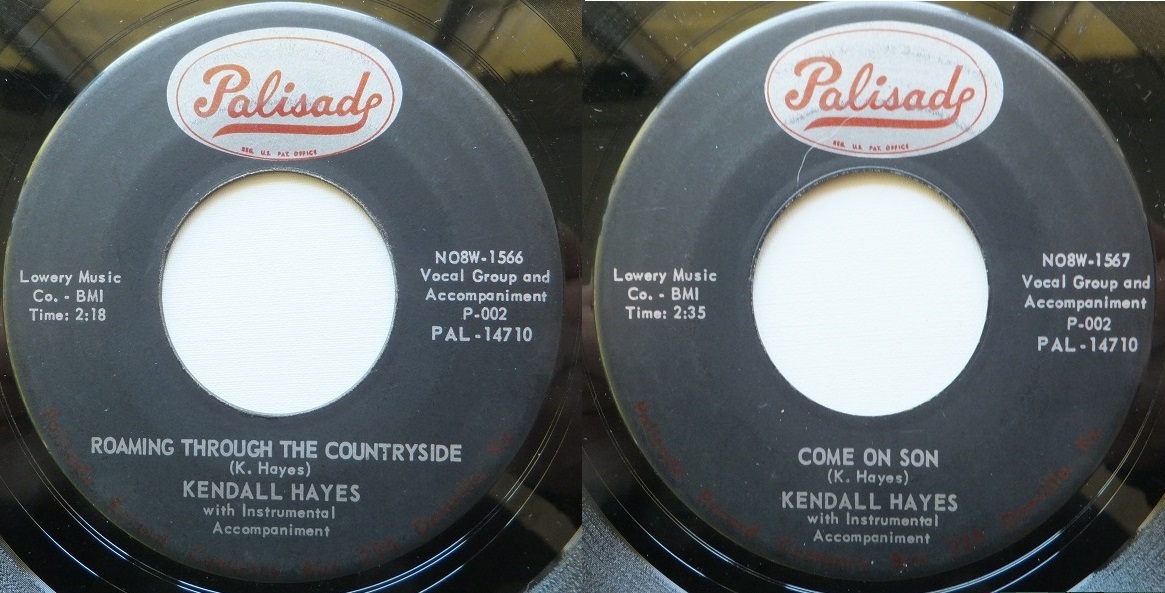
Lemco
109 It Get’s (sic) Dark Early In Louisville / Georgiana 1975
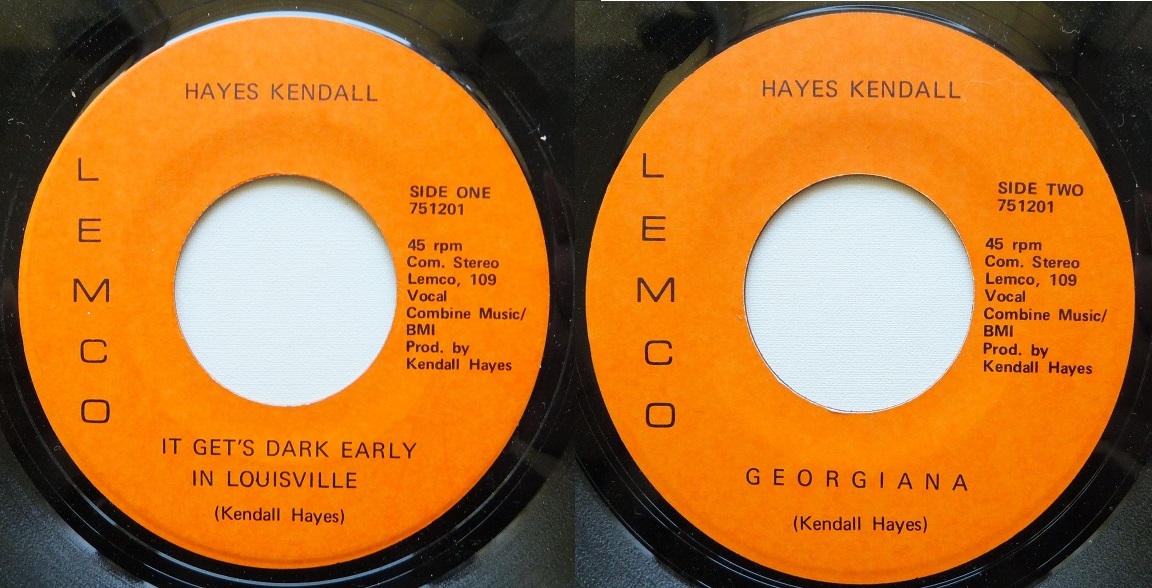
Other Non-KY Selected Discography:
45s:
Chart
1125 Let’s Start Slipping Around Together (And We Can Write A Song) / I Was Just Along For The Ride 1964
Pelham
4501 Roaming Through The Country Side / Johnny Lonesome 1963
Sims
171 Don’t Give Up The Ship / I Didn’t Mean For It To Happen That Way 1964
Wizard
209 Gone To The Country / Between Midnight And Dawn 1966
He was a local jewel! I’ve sat with him many nights after working at Kroger, on his back patio, playing guitar and drinking Old Milwaukee’s! He was never a fan of my Ovation guitar! He’d tell me, “That guitar needs to be, all wood!” Incredible memories with an incredible man, and an immense talent! I still miss him dearly!
Have heard great memories of Kendall playing the piano at Perryville,Ky high school gym/cafeteria. Have some of his 45 rpm Lemco records (“It Gets Dark in Louisville.” Other side of record is Georgiana). Good bro!!!
Heard Kendall had great recording studio at Kendall’s home/basement. Danville, KY fan !!